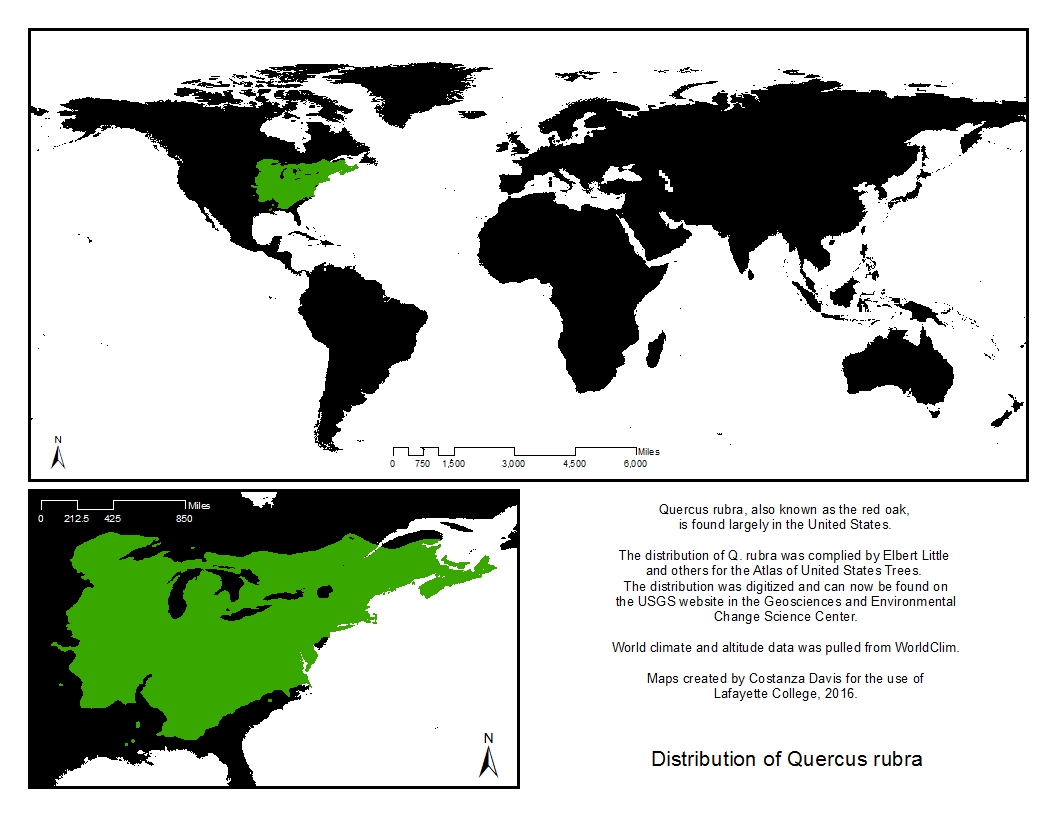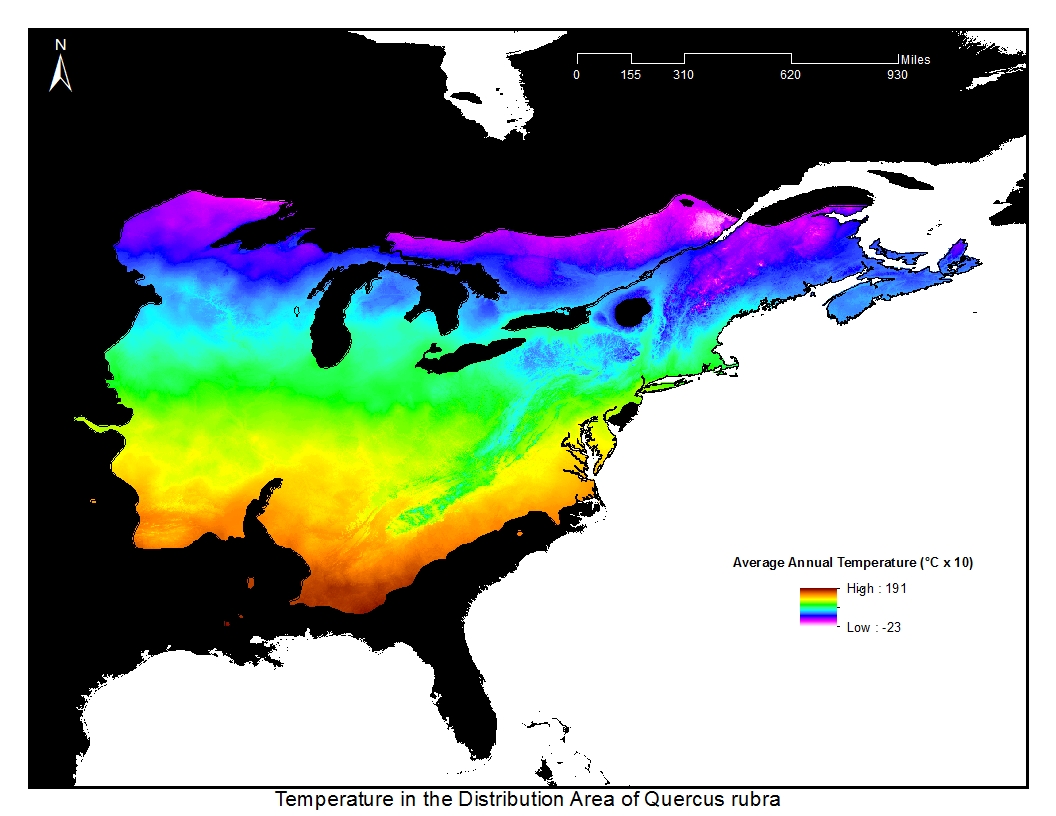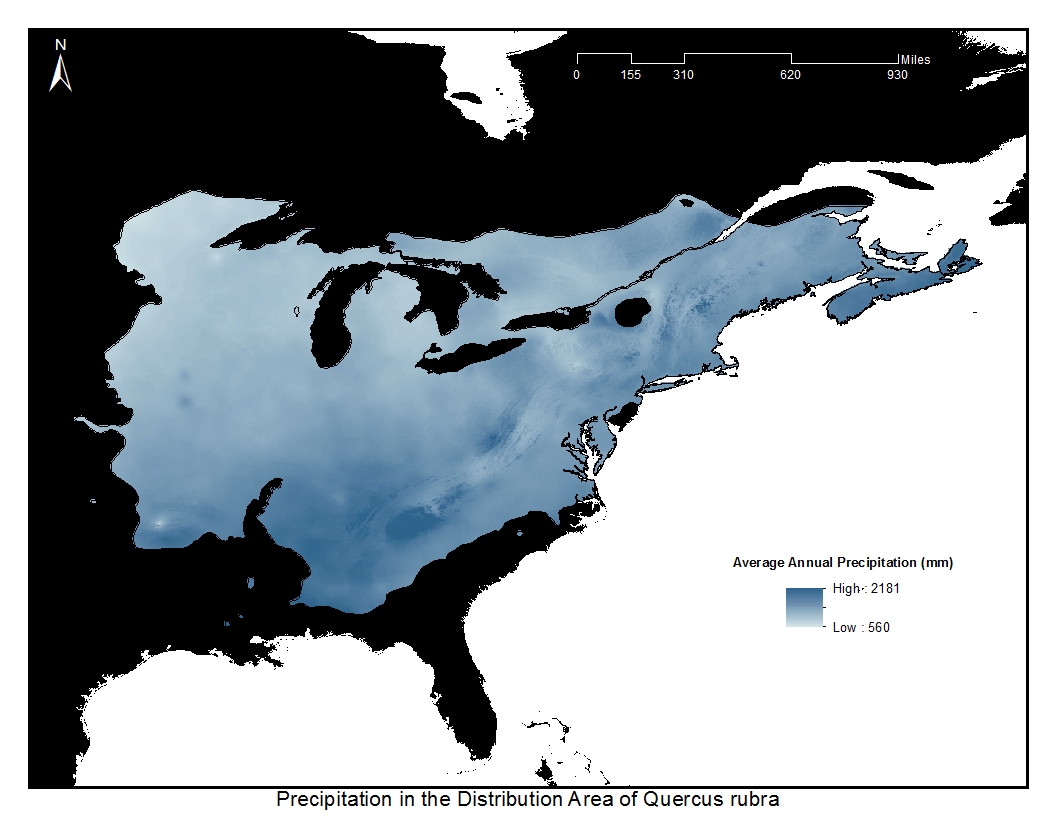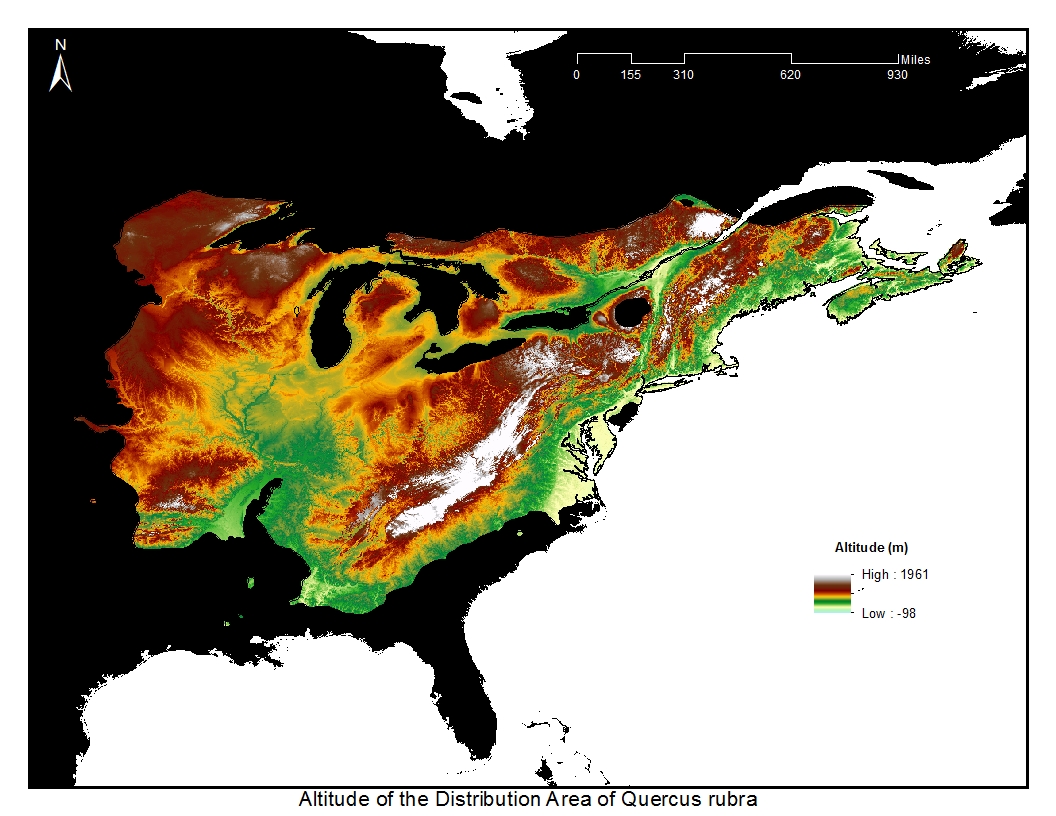Northern red oak, Quercus rubra, is also known as common red oak, eastern red oak, mountain red oak, and grey oak.
The northern red oak typically matures to 65 to 98 feet, with 24 to 36 inches of trunk diameter.
Temperature, precipitation, and frost vary by sizable amounts. Snow alone can range from 0 to 100 inches annually, depending on location. Frost-free days can likewise change with averages of 100 to 220 days by location.
The tree grows best on moist soils, though these soils can be cool or moist. Soils can vary from clay to loamy sands, often with a high content of larger rock fragments. Deep soils are best.
Although the northern red oak can be found at many elevations, low to middle slopes with northern or eastern aspects are ideal, as well as well-drained valley floors and deep ravines.
Northern red oak is monoecious, meaning male and female parts are found on the same tree. The flowers are often long, dangling greenish catkins that appear with or before the leaves in April or May. The resulting fruit is an acorn, found alone or in clusters of two to five. An acorn takes two years to fully mature, and the brown acorns are then usually ripe by late August to late October. Fruit can be born at age 25 but seeds are not abundant until age 50, with the best seed crops occurring every two to five years. However, only approximately 1% of acorns can actually be used for a new seedling. In the end, it can take over 500 acorns to produce a natural seedling. Much of the issue lies in the consumption by animals such as insects, squirrels, deer, birds, and more.
This tree is often found surrounded by the same species, and an acorn never falls far from the tree. Dispersal beyond that is driven by squirrels. Furthermore, northern red oaks are often produced through sprouts from cut trunks. Sprout size depends on the size of the trunk.
Northern red oak is shade tolerant, though not as much as many other common species. Wildfires are a concern, as fire-weakened trees can easily be overtaken by fungi. Oak wilt is a disease that can kill a northern red oak the year the tree contracts the disease.
It is one of the most important red oaks for lumber, due to its growing speed. Growth rates can reach 0.4 inches per year. Additionally, the bright fall colors and symmetrical shape make this tree ornamentally attractive.




